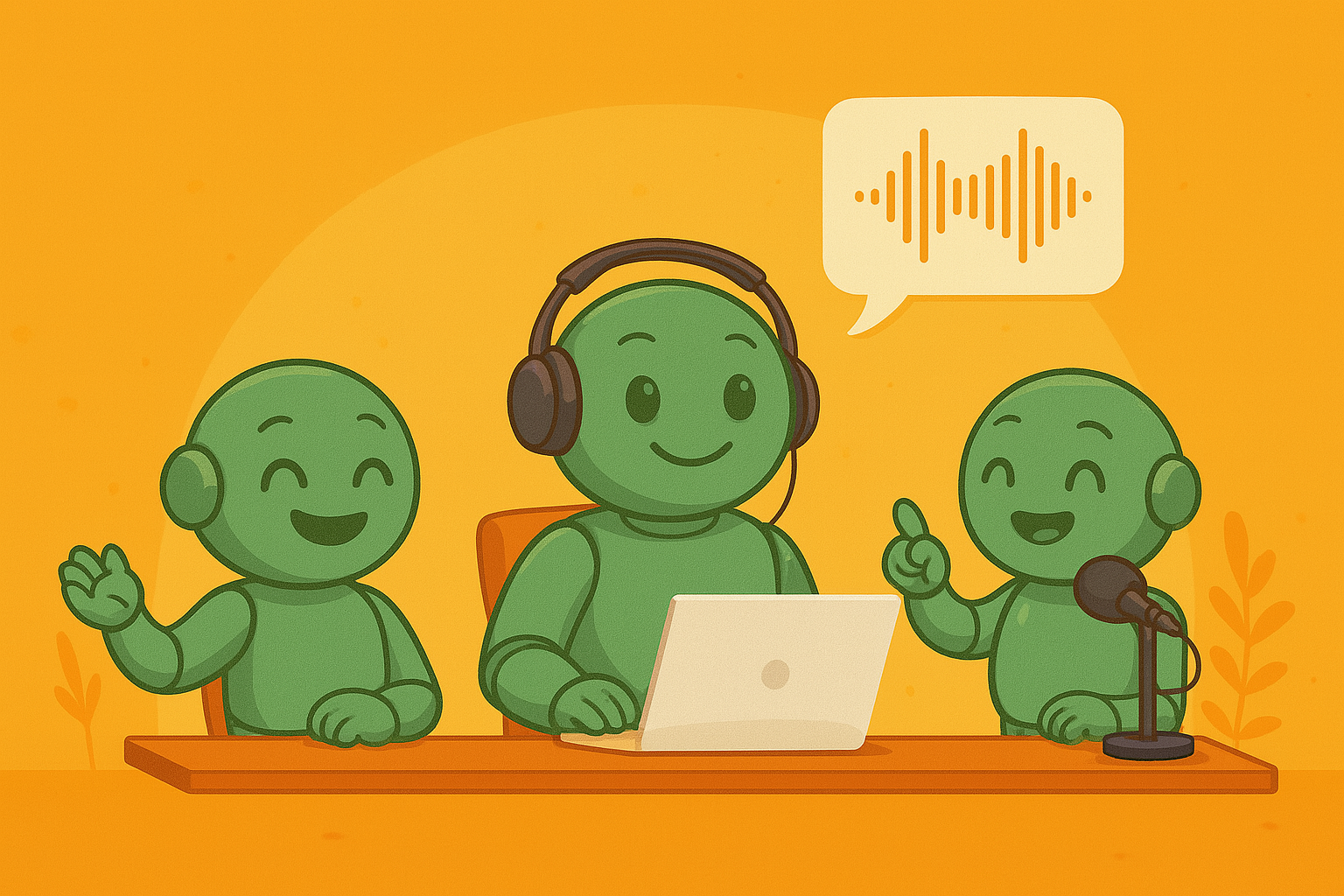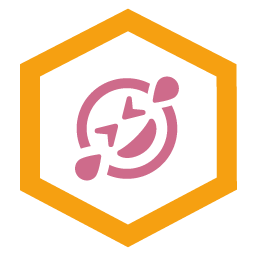How to Pronounce Names: Easy Tips to Get It Right
Why Getting Names Right Changes Everything
We’ve all had that heart-sinking moment. You’re about to introduce someone, and their name, which you knew just a second ago, vanishes into thin air. While it's an awkward social fumble, consistently getting a name wrong is more than just an embarrassing slip-up. It's a squandered chance to build a real connection and can unintentionally signal a lack of respect.
The Unspoken Message of Mispronunciation
When someone's name is repeatedly mispronounced, it can feel like a persistent, low-grade insult. For the person on the receiving end, it's not just a simple mistake. It can be a grating reminder that they are perceived as "different" or that their identity isn't important enough for others to get right.
Imagine the mental load of constantly having to correct people, or even worse, deciding it’s not worth the effort and answering to a version of your name that isn't truly yours. Over time, these small acts of mispronunciation build a wall, creating distance where there could be inclusion.
More Than Just a Label: Names as Identity
A person’s name is a huge part of who they are, deeply connected to their family, culture, and personal history. It's not just a sound; it's a story. Actress Uzo Aduba famously told a story about wanting to shorten her name for convenience. Her mother’s response was perfect: "If they can learn to say Tchaikovsky and Michelangelo and Dostoyevsky, they can learn to say Uzoamaka."
This powerful perspective gets to the heart of the matter—names carry immense personal and cultural weight. Taking the time to learn them is a fundamental act of respect. This is especially true in a professional context, where pronouncing names correctly helps create a foundation of psychological safety and belonging.
In a revealing poll, a staggering 74% of people admitted they struggled to pronounce colleagues' names, which sometimes caused them to avoid interactions altogether. At the same time, 38% of respondents said their own names were regularly mispronounced at work. This problem disproportionately impacts people from diverse backgrounds, which can weaken team dynamics and leave colleagues feeling unseen and devalued. Discover more about the power of pronunciation in the workplace.
The Power of Getting It Right: Building Trust
On the flip side, the simple act of getting a name right can be transformative. When you make the effort, you're not just learning how to pronounce names—you're signaling attentiveness, respect, and a genuine interest in the other person. It's one of the most effective relationship-building tools available.
This small investment can turn a potentially awkward introduction into a moment of genuine connection. For instance, think of a project manager who spends five minutes before a kickoff call learning the correct pronunciations for her new international team. She immediately establishes a baseline of trust and mutual respect that will benefit the entire project. It proves you care enough to get the details right, and that commitment speaks volumes.
Navigating the Beautiful Complexity of Global Names
We've all been there—staring at a name on a conference badge or in an email, feeling that momentary panic. The key to learning how to pronounce names isn't about brute-force memorization. It's about understanding the fascinating logic and music behind them. Once you start to see the patterns, what once felt intimidating becomes a puzzle you can actually enjoy solving.
Decoding Cultural Naming Patterns
Every language has its own phonetic toolkit, and names are a direct reflection of it. Instead of seeing an unfamiliar name as a jumble of letters, try to think of it as a piece of a different linguistic system. Learning just a few of these rules can give you a massive confidence boost when encountering names from different backgrounds.
-
Spanish Phonetics: In many Spanish-speaking regions, the double 'll' is pronounced like a 'y' sound. This is why a name like Padilla isn't 'Puh-DILL-ah'. The correct, and much smoother, pronunciation is ‘Pah-DEE-yah’. Getting this one rule down helps you correctly say countless other names.
-
Chinese Tonal Systems: In languages like Mandarin, tone is critical. The same syllable, 'ma,' can mean mother, horse, or to scold, depending entirely on the pitch of your voice. You don't need to become a master of tones overnight, but simply being aware that they exist is a huge first step toward a more respectful pronunciation.
-
South Asian Rhythms: Many names from Hindi or Sanskrit backgrounds have a beautiful, rhythmic quality. Stress is often distributed more evenly across the name than in English, meaning each syllable gets its moment in the spotlight. This encourages a more deliberate and balanced pronunciation.
The Story Behind the Sounds
Beyond the immediate sounds, names often carry clues about their history and geography. The rich tapestry of global names is woven with stories of migration, trade, and cultural connection. When you recognize these influences, a challenging name transforms into a fascinating piece of living history.
This blending of languages and cultures is more apparent now than ever. In our connected world, we meet people from all walks of life. Consider that English is spoken by about 1.52 billion people worldwide, and Mandarin Chinese is right behind with around 1.14 billion speakers. This incredible diversity makes the effort to pronounce names correctly more important than ever. You can explore more insights on the world's most spoken languages here.
This kind of cultural awareness is a cornerstone of doing business globally, something especially true for startups and growing companies. You can read more about this in our guide on the foundations of professional naming. By approaching a new name with genuine curiosity instead of anxiety, you turn a moment of potential awkwardness into an opportunity for connection. You're not just saying a word; you're acknowledging a vital part of someone's identity.
Breaking Down Complex Names Like a Pro
Ever see a name like Siobhán or Ngozi on a meeting invite and feel a small wave of panic? You're not alone. But here’s the secret: even the most unfamiliar names are just a collection of sounds. Learning how to pronounce names correctly isn’t a magical talent; it’s a skill you can build by breaking them down into smaller, more manageable parts.
From Letters to Sounds
The first step is to stop reading the name and start hearing it. Our brains are trained to apply English spelling rules to everything, which often leads us astray with names from other languages. Instead, we need to listen for the individual phonemes—the distinct units of sound that make up the name.
The Irish name Siobhán, for example, can be intimidating on paper. But it's really just three sounds put together: "Shi," "vaw," and "n." Once you hear those parts, "Siobhán" feels much more approachable. The next move is to group these sounds into syllables, which act as the rhythm or beat of the name.
This simple process is all about deconstruction: identify the sounds, group them into syllables, and then practice putting them back together.
As the visual shows, mastering a name is a series of small, focused steps, not one giant leap of memory. It's a method anyone can adopt.
Finding the Rhythm with Stress Patterns
Once you have the syllables down, the next piece of the puzzle is stress. Where does the emphasis go? Placing the accent on the wrong syllable can make an otherwise perfect pronunciation sound completely off.
Take the name Kamala. The correct stress falls on the first syllable: KA-ma-la. If you were to say "ka-MA-la," it would change the entire flow and feel of the name. When you can, listen carefully to how a native speaker says it. If you can't ask them directly, many online pronunciation guides will bold or capitalize the stressed syllable for you.
To give you a head start, here's a look at some common phonetic patterns you might encounter in names from different language families. While these are generalizations with plenty of exceptions, they can provide valuable clues when you're making an educated guess.
Common Phonetic Patterns Across Cultures
A comprehensive comparison of pronunciation patterns, stress rules, and sound combinations found in names from major language families.
| Language Family | Stress Pattern | Common Sounds | Example Names | Key Tips |
|---|---|---|---|---|
| Romance (e.g., Spanish, Italian) | Typically on the second-to-last syllable. | Clear, pure vowels (A, E, I, O, U). Rolled 'R's. | Isabella, Mateo, Giovanni | Vowels are pronounced fully and not softened. 'J' often sounds like 'H' (Spanish). |
| Germanic (e.g., German, Dutch) | Usually on the first syllable of the root word. | Hard consonants, 'W' sounds like 'V', 'CH' can be a soft or hard throat sound. | Wolfgang, Ingrid, Annelise | Hit that first syllable with confidence. Pay attention to vowel combinations like 'ei' (sounds like "eye"). |
| Slavic (e.g., Polish, Russian) | Can be fixed (e.g., Polish is almost always second-to-last syllable) or variable (Russian). | Consonant clusters (sz, cz, rz). Voiced and unvoiced consonants. | Agnieszka, Vladimir, Katarzyna | Don't be intimidated by clusters like 'sz' (sh) or 'cz' (ch). Break them down into sounds you know. |
| East Asian (e.g., Mandarin Pinyin) | Tonal language; pitch is more important than stress. Each syllable has a specific tone. | Simple syllable structures (consonant + vowel). Sounds like 'x' and 'q' have unique pronunciations. | Wei, Meiling, Xiao | Listen for the musicality or pitch. A rising or falling sound can completely change the word. |
Keep in mind that these are just starting points. The incredible diversity of names means there will always be variations, but understanding these basic tendencies can take a lot of the guesswork out of your first attempt.
Practical Memory Aids That Stick
Knowing how to say a name is one thing, but recalling it correctly when you're on the spot is another challenge entirely. This is where a few simple memory aids can make all the difference.
Here are a few techniques that have worked wonders for me and others:
- Create a Rhyme or Sound-Alike: Does the name Gupta sound a little like "good pup" to you? It might feel silly at first, but that mental link is powerful and easy to retrieve under pressure.
- Make a Visual Connection: If you have a colleague named Lina, you could picture her drawing a perfectly straight "line." This connects the sound of her name to a memorable image, which is especially helpful for visual learners.
- Write It Out Phonetically: Don't get tripped up by official spellings. In your private notes, jot down the name the way it sounds to you. For the name Joaquin, you might write "Wah-keen." This personalized phonetic guide is for your eyes only and is an incredibly effective tool for reinforcement.
Your Digital Pronunciation Toolkit
While breaking names down manually is a great skill, having the right technology can feel like a secret weapon for getting pronunciations right. With an app for just about everything these days, learning how to pronounce names correctly has never been easier. The real trick is figuring out which digital tools are actually helpful and how to work them into your daily life.
Apps and Websites for Instant Help
Fortunately, a ton of great resources are just a click away, and they go far beyond those old robotic text-to-speech voices. Websites like Forvo are absolute goldmines because they feature a massive, crowd-sourced library of names pronounced by actual native speakers. This is a huge deal, as you get to hear the authentic rhythm and subtle sounds that a computer program often misses.
Many free tools are incredibly useful for quick checks:
- NameShouts: This site is designed specifically for names, giving you both audio clips and simple phonetic spellings.
- Google: A quick search for a name often brings up an audio player and a "how-to-pronounce" guide right in the results.
Workplace Integration for Better Communication
This technology is also making a real impact in our professional lives. Smart companies are now using tools that put correct pronunciations right where you need them—in your work apps. For example, Microsoft's Graph API now lets people record their own name’s pronunciation, which then appears on their profile cards in Teams and Outlook. In a global team with diverse names, a feature like this can make everyone feel more included from day one. You can discover more on how Microsoft enables this feature here.
Here is what the setting looks like from an administrative view:
This simple setting empowers employees to share their identity accurately, which removes a lot of the guesswork and anxiety for their colleagues.
AI Coaches and Naming Resources
Going beyond simple playback, some AI-powered coaches can now adapt to your personal learning style. They offer targeted exercises and give you feedback on your pronunciation attempts, helping you nail those tricky sounds through practice.
And while these digital assistants are great for learning existing names, other platforms can help you find new ones. If you're working on a branding project or anything creative, exploring different naming tools for every need can be a fantastic source of inspiration. The goal isn’t to download every app out there, but to build a small, curated set of digital allies you can rely on for continuous improvement.
Handling Real-World Pronunciation Challenges
Knowing which digital tools to use is a fantastic start, but the real test comes when you have to pronounce a name in real time. Picture this: you're on a conference call with international colleagues, navigating a buzzing networking event, or about to introduce a keynote speaker. That flicker of anxiety is completely normal. With the right approach, however, these moments can become opportunities to connect, not minefields to avoid.
The Art of Asking Gracefully
Often, the fear of getting a name wrong stops us from even trying. But here’s a little secret: asking for a name’s pronunciation isn’t a sign of weakness; it’s a clear signal of respect. Instead of fumbling through a guess, a direct and warm approach works wonders.
Rather than making it a big deal, you can weave it into the conversation.
- In a professional meeting, a simple, "I want to be sure I’m getting your name right. Could you please say it for me?" shows you're attentive.
- At a social gathering, something like, “That’s a beautiful name. Would you mind pronouncing it for me so I can say it correctly?” comes across as a genuine compliment.
This simple act shows you care enough to make an effort. After they say it, repeat it back for confirmation: “Katarzyna? Did I get that close?” This small interaction builds immediate rapport and turns potential awkwardness into a real moment of connection.
Recovering from a Mistake
Let’s be honest: mistakes are going to happen. The key isn’t to never slip up, but to recover with grace and confidence. If you mispronounce a name, resist the urge to over-apologize. That can make the moment more about your embarrassment than their comfort. A simple, sincere correction is always the best path.
Try a phrase like, “My apologies, I think I stumbled on that. Would you mind correcting me?” This shifts the focus back to learning and shows your commitment. The effort to correct the mistake is what people truly remember, not the initial error. This approach helps you manage your own nerves and demonstrates that your priority is respect, not perfection.
Cultural Context Is Key
Your approach might need a slight tweak depending on the setting. For high-stakes moments, like introducing a VIP, doing your homework beforehand is a professional courtesy. For daily interactions with colleagues, sincerity is your best tool.
Understanding the background of a name can also provide valuable clues. Exploring sources for Naming Inspiration can offer deeper cultural context that helps with both pronunciation and appreciation. At the end of the day, your genuine desire to show respect will always shine through, turning challenging interactions into strong, positive connections.
To help you put this all into practice, here’s a quick guide for handling name pronunciation in different scenarios.
Situation-Specific Pronunciation Strategies
This table offers practical approaches and scripts for handling name pronunciation in various professional and social contexts.
| Situation | Preparation Strategy | Recovery Technique | Cultural Considerations | Example Phrases |
|---|---|---|---|---|
| First Meeting With a New Client | Look up their name on LinkedIn; some users have an audio pronunciation feature. Listen carefully during introductions. | "My apologies, could you say that for me one more time? I want to make sure I get it right." | In some cultures, it's customary to use formal titles (Mr./Ms.) until invited to use a first name. | "It's a pleasure to meet you. I want to be sure I'm pronouncing your name correctly." |
| Networking at an Industry Event | Don't prep for every name; focus on listening. When you receive a business card, take a moment to read the name. | "I'm sorry, I didn't quite catch that with all the noise. Could you repeat it for me?" | The environment is often informal, but showing respect is still a powerful networking tool. | "That's an interesting name. Would you mind telling me how to pronounce it?" |
| Introducing a Guest Speaker | Contact the speaker or event organizer beforehand for a phonetic spelling or audio clip. Never guess. | If corrected publicly, simply say: "Thank you for the correction. [Repeat name correctly]" and move on smoothly. | Confirm preferred titles (e.g., Dr., Professor). Getting a title wrong can be as significant as mispronouncing a name. | (To the speaker beforehand) "I'm honored to introduce you. To ensure I do it properly, could you pronounce your full name for me?" |
| Daily Interaction With Colleagues | Once you learn a colleague's name, make a private note (e.g., phonetic spelling) to help you remember. Practice it. | "I think I've been saying your name wrong this whole time, and I'm so sorry. Can you correct me?" | Be mindful of nicknames. Only use one if the person offers it or is introduced that way. | "I've heard a few people say your name differently. What's your preferred way for me to say it?" |
Ultimately, while each situation has its nuances, the core strategy remains the same. A combination of thoughtful preparation, sincere effort, and graceful recovery will help you navigate any interaction with confidence and respect.
Creating Your Personal Pronunciation System

Getting better at pronouncing names isn’t about cramming right before a big meeting. Lasting improvement comes from building a simple, consistent practice that actually fits into your life. The most effective method is one you design yourself, playing to your own strengths. This approach turns the challenge of how to pronounce names into an ongoing and genuinely rewarding skill.
Find Your Learning Style
Everyone’s brain is wired a little differently, which is why a one-size-fits-all approach to memorization rarely sticks. The key is to lean into how you naturally learn. Are you someone who remembers things by hearing them, seeing them, or doing them? Using techniques that click with your personal style makes remembering names feel much more effortless.
- For Auditory Learners: Your memory is triggered by sound. Try listening to audio clips of a name several times. Say it out loud and record it on your phone so you can compare your version to the correct one. It can also help to create a simple rhyme or a sound-alike phrase that connects the name to something you already know.
- For Visual Learners: If you remember what you see, use that to your advantage. Write the name down with your own phonetic spelling that makes sense to you—for instance, “Wah-keen” for Joaquin. You could also associate the person’s face with a simple mental image that sounds like their name. In your notes, you could even try color-coding names by region or department.
- For Kinesthetic Learners: Involve physical action in your learning process. Try writing the name out by hand multiple times to build muscle memory. As you say the name, trace the letters in the air or on your desk. You could even create a subtle, unique gesture that you mentally associate with that person’s name.
Build a Reference and Review Habit
A reliable system is your best friend for long-term recall. Think about creating a personal pronunciation dictionary in a notes app or a small notebook. Whenever you encounter a new name, jot down your phonetic spelling, a memory aid, and a quick note about the person. This personal reference becomes your secret weapon.
The real magic, though, is in the review process. It doesn't have to be intense; a quick two-minute scan of your notes before a call can make a huge difference in your confidence. And if someone ever corrects you, see it as a gift. Thank them, and immediately add the correct pronunciation and any new insights to your system. This simple action transforms a minor mistake into a permanent learning moment.
This habit isn't just about avoiding slip-ups; it’s about building a muscle of attentiveness. Over time, you'll find yourself listening more carefully during introductions and actively looking for opportunities to practice. Celebrating those small victories—like confidently greeting a colleague by their correct name—builds the motivation to keep going, strengthening your professional relationships with every interaction.
Key Takeaways
We’ve covered a lot, from the personal weight a name carries to the practical steps for getting pronunciation right. Now, let’s pull it all together into a final game plan. The goal here is to shift from feeling anxious about names to feeling confident, making this skill a genuine part of how you connect with others.
From Anxiety to Advocacy
Let's be honest, the biggest hurdle is often the fear of getting it wrong. The secret is to reframe your thinking. Learning how to pronounce names correctly isn't about being perfect; it's about showing you care enough to try. Start small by focusing on the names of your immediate colleagues before branching out.
You will make mistakes—it's part of the process. When it happens, remember to recover with grace. A quick, honest apology and a request for correction is always better than ignoring it. As you get more comfortable, you can even become a quiet advocate for others. This might mean gently helping a coworker in private or simply leading by example. Your effort contributes to a space where everyone feels their identity is seen and valued.
Building Your Sustainable Habit
A new skill only sticks if you build it into your routine. The idea is to create a simple, repeatable system that works for you and reinforces what you’ve learned.
- Have Your Go-To Tools Ready: Keep a trusted resource like Forvo or a pronunciation app on your phone. This allows for quick, on-the-spot checks right before you walk into a meeting.
- Build Your Own Cheat Sheet: Maintain a private list—in a notebook or a phone note—with your own phonetic spellings and memory tricks. A quick two-minute review before a call can make a world of difference.
- Use It or Lose It: Don't just learn a name in isolation; put it into practice. Greet people by their name and use it naturally in conversation. This active recall is what truly cements it in your memory.
- Share What You Know: If a colleague is struggling and asks for help, share your methods. Break the name down phonetically or offer a word it sounds like to help them connect the dots.
Your Competitive Advantage
Ultimately, this skill goes far beyond good manners. In a world that’s more connected than ever, being able to pronounce names correctly is a powerful way to build relationships. It signals attentiveness, cultural awareness, and a deep-seated respect that people notice and appreciate.
This genuine effort opens doors to stronger professional bonds and more meaningful personal connections, giving you a real advantage in any room. This entire process is about the power and respect a name carries. When you're ready to find a name for your own brand or project that commands that same connection, the tools at NameRobot can help. Explore our smart name generators and start your naming journey at https://namerobot.com.















